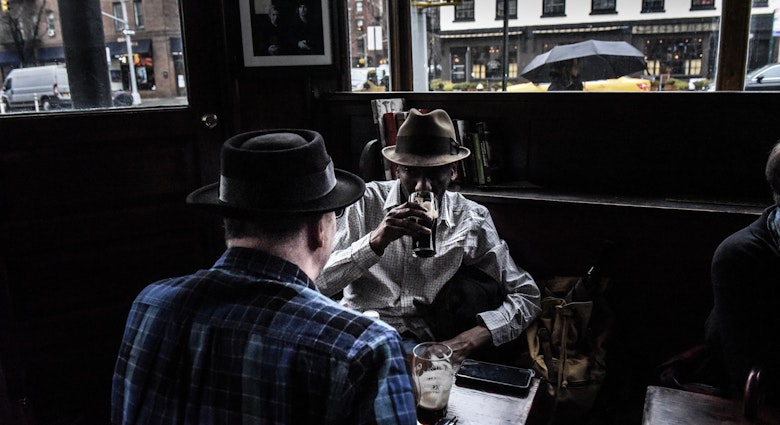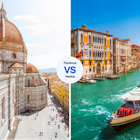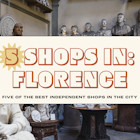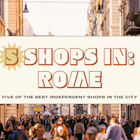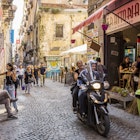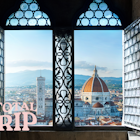First things first. Both European capitals are impossibly good-looking, possess rich history and natural charm in spades, and flaunt an infuriatingly unfathomable panache. Art de vivre. Dolce vita. Call it what you like. Paris and Rome are peerless cultural icons that know their ‘je ne sais’ from their ‘quoi’ and understand only too well how to live the Good Life in style.
This is precisely why it can be so maddeningly tricky to choose between the two when planning a romantic city break, family escape, or week’s vacation centered around world-class art museums, eminently fine food and wine, stylish boutique shopping, intoxicating café life, and rip-roaring entertainment after dark.
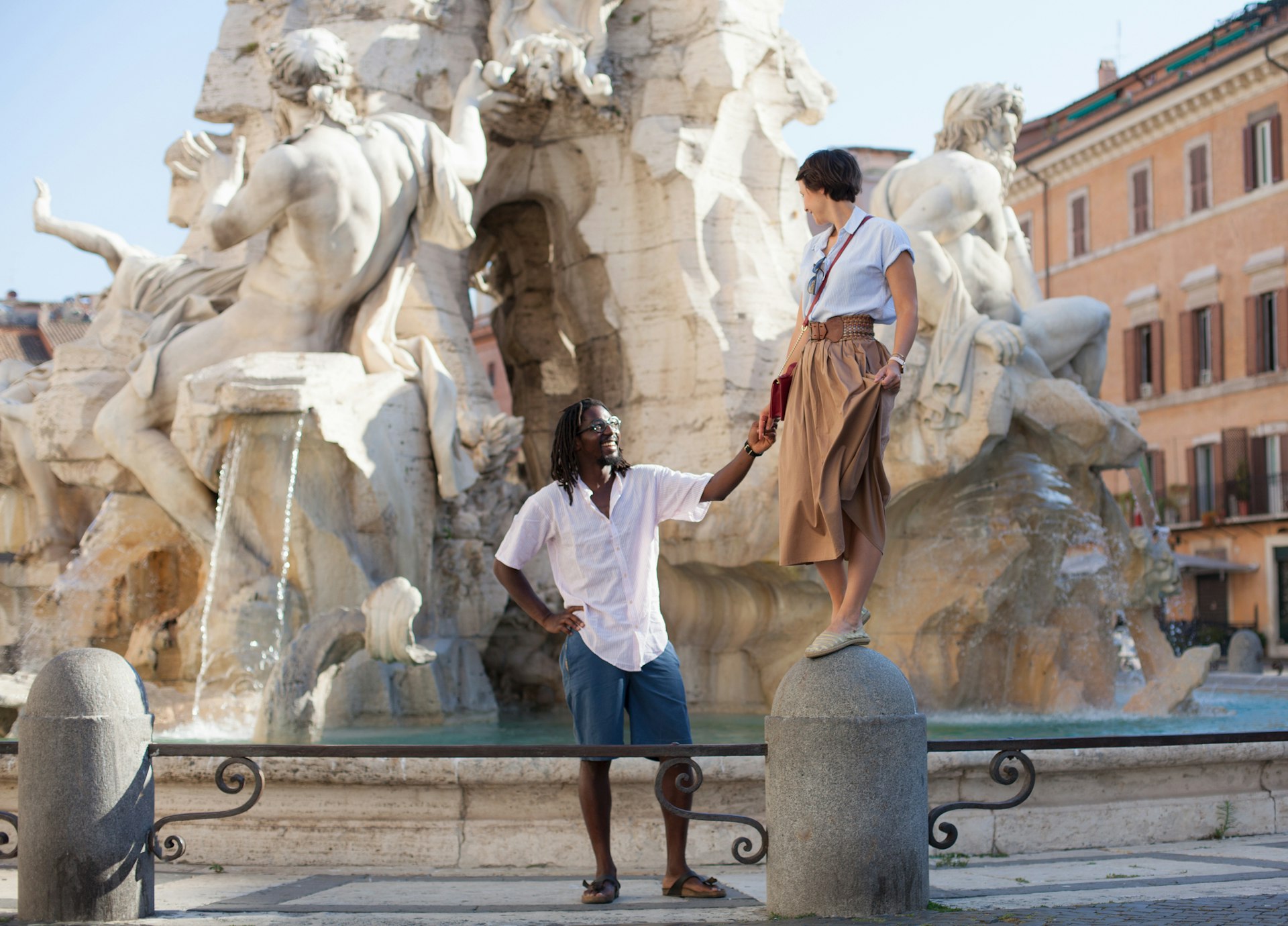
Which city bags the prize for best art and architecture?
Few cities rival Paris or Rome’s gargantuan artistic heritage, which makes a showdown between these two cultural heavyweights all the more enthralling.
Paris’ Musée d’Orsay is the crown jewel of Impressionism
The French capital has been known as the ‘city of light’ or La Ville Lumière since the Age of the Enlightenment when it emerged as a hub of learning and education. The glittering belle époque launched art nouveau architecture and a whole field of artistic ‘isms’, and by the 1920s Paris was Europe’s center of the avant-garde.
Creativity and innovation remain the lifeblood of contemporary Paris, and for art lovers, the instinctive artistry and ingenuity pulsating from every museum, gallery, or street mural are unmatched. Even metro stations, for goodness sake, are œuvres d’art in this resplendent capital jostling with art and architecture icons known the world over (Musée du Louvre, Centre Pompidou, Eiffel Tower) and treasured niche collections (Musée Guimet des Arts Asiatiques, Musée du Quai Branly, Musée Cernuschi) prized by globe-trotting curios.
Art and architecture in Paris are not limited to one artistic period or genre. From the vast collections of paintings and sculpture at the Louvre (antiquity to mid-19th-century) and Musée d’Orsay (mid-19th-century to 1914) to the crown-jewel Impressionism of Monet & Co at Musée de l’Orangerie and Musée Marmottan Monet, or the treasured Picassos at the same-name house museum, there really is something for everyone.
Art in Paris also dares to surprise and thrill: Exquisite stained glass from the 13th century in Gothic Sainte-Chapelle; ornate tombs in a 44-hectare sculpture garden at Père Lachaise; digital light projections in a 19th-century foundry at Atelier des Lumières; ephemeral wax sculptures that melt before your very eyes at the Bourse de Commerce Pinault Collection, open since 2021 in Paris’ historic grain market and stock exchange.
Ceiling frescoes by Michelangelo in Rome are among the world’s most famous artworks
Paris might have the Louvre and Leonardo Da Vinci’s Mona Lisa, but Rome has Michelangelo. The Italian artist’s fresco of the Last Judgement (1508–12) in the Sistine Chapel gave Western Art its most iconic gesture – a bearded God pointing his finger at Adam to bring him to life – and no other artwork is such a Herculean crowd puller: On busy days up to 2000 visitors stare up in unison at it. Other Michelangelo masterpieces in the capital (Pietà in St Peter’s Basilica, Moses on Julius II’s tomb in Basilica di San Pietro in Vincoli, a naked resurrected Christ in Basilica di Santa Maria Sopra Minerva) confirm Rome as Michelangelo Central.
Given Rome’s superlative ancient history, it is not surprising that the Italian capital doesn’t do modern or contemporary art quite so well. How could it when its repository of priceless ancient, medieval, and Renaissance art is so encyclopedic? Days can be spent devouring classical art (Raphael fresco alert!) in the Vatican Museums, Caravaggio and other great titans in Museo e Galleria Borghese, and 11th- to 18th-century treasures in Palazzo Barberini – all displayed in sumptuous palaces. Fountains by baroque master Bernini practically litter the city. For art enthusiasts eager to wind to the beginning, Rome rewards with Etruscan art and artifacts in the Museo Nazionale Etrusco di Villa Giulia, ancient sculptures in the Capitoline Museums, and Byzantine frescoes and mosaics in overlooked gem Museo Nazionale Romano.
The winner: It must be a tie. If your internal art compass naturally hovers over early art history on the timeline, Rome is your victor. Nineteenth-century and beyond? Pareeeee, ma chère!
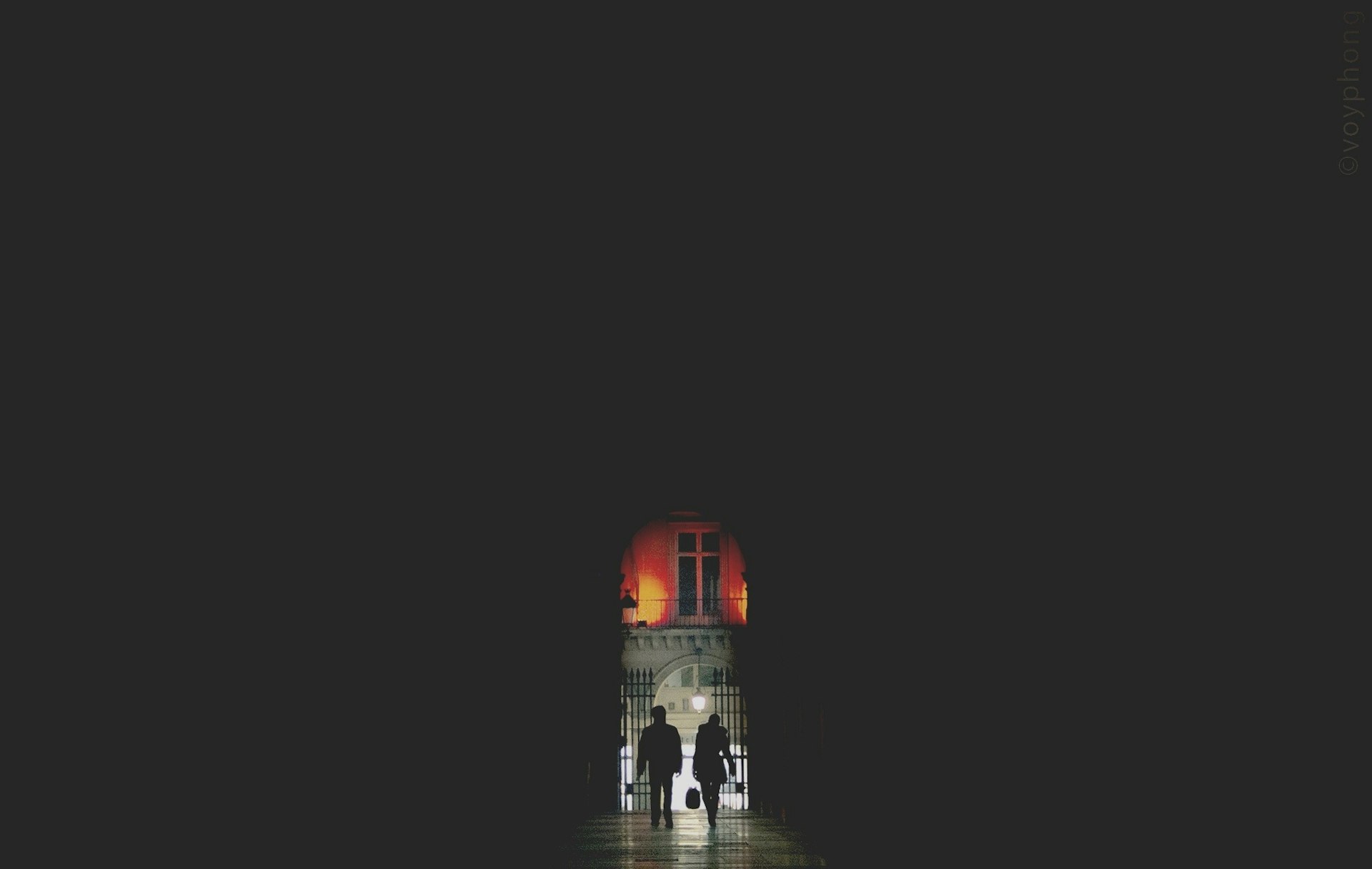
Both cities are cultural divas after dark: which seduces most?
Befitting of European capitals, Paris and Rome entertain with a lavish pageant of opera, theater, live music, and cinema. In summer many nightclubs in both cities close, but art festivals pop up and social life spills outside onto café terrace-stitched squares, parks, and star-spangled riverbanks along the Seine and the Tiber.
Catch cabaret on a fabled stage or mix with thespians in backstage Paris
For visitors to the French capital, whirling lines of feather-boa-clad, cancan dancers at grand-scale cabarets like Pigalle’s fabled Moulin Rouge are an evitable fixture. A flurry of prestigious venues (Palais Garnier, Opéra Bastille, Comédie Française, Philharmonie de Paris and La Seine Musicale) stage French and international opera, ballet, theater and musicals.
Backstage at Point Éphémère, Le 104, La Place (meet French hip hop!), and other experimental venues, young, passionate, highly creative musicians, thespians, and other artists carve out a compelling fringe scene. That’s before we get onto the world-class musiques du monde (world music) and cinema.
Enjoying a bewitching show beneath the stars amid ancient ruins in Rome
Rome’s charm lies in its insanely enchanting and historic backdrops. Summer festivals make splendid use of the archaeological scenery, with evening performances taking place at Ostia Antica’s Roman theatre, Teatro di Marcello amid ancient ruins in the Centro Storico and Tivoli's Villa Adriana. Catch classical music by Rome's world-class Orchestra dell'Accademia Nazionale di Santa Cecilia at the flagship Auditorium Parco della Musica or opt for a free concert in a church – the acoustics are sublime.
The winner: You’ll have a ball in either city, but Rome wins this duel for its generous fairy-godmother sprinkling of freebie concerts and atmospheric festivals every Cinderella can enjoy.

Which city feeds foodies best?
Paris and Rome live to eat. From traditional street markets and experimental food trucks to casual bistros and trattorie, elegant restaurants, and gastronomic temples, both promise a feast of outstanding foodie ops.
Pistachio macarons, oysters, and steak-frîtes in Paris
A crossroads for France’s regional produce and flavors, Paris does not have a ‘local’ cuisine – rather, a flurry of notable trends and chefs guaranteed to excite taste buds. Contemporary neo bistros run by young talented chefs (reserve a table at hallowed Septime or eco-conscious Les Résistants in the food-edgy 10e) promise exciting dining.
Gourmet street food is constantly evolving, as is the patisserie scene where experimental pastry chefs unveil dazzling new collections of macarons, Paris-Brest, and éclairs each season. For Parisians, eating and drinking go together like cheese and wine: Follow suit in a bar à vin (wine bar) or cocktail bar pairing drinks with shared plates (spend an evening at Le Mary Céleste and you’ll never look back).
Carbonara, tripe, and deep-fried artichokes in Rome
Dining in Rome is becoming increasingly sophisticated, but local, seasonal ingredients remain the norm in Roman cuisine – as it has been for millennia. Cheaper cuts of meat, like guanciale (pig’s cheek), and greens gathered wild from fields star in local dishes: Carciofo alla giudia (a locally-grown artichoke flower, deep-fried and presented intact) served in a timeless trattoria in down-to-earth Trastevere or Testaccio is a highlight.
Rome is also the place to experience Real McCoy carbonara (pasta with guanciale, egg, and salty pecorino romano; sheep's milk cheese) – the eponymous dish hails from here. The Museo della Cucina, opening in May 2022, is the new golden ticket to learning about Italian and Roman cuisine through the ages.
The winner: For the sweet-toothed, Paris. For its own home-grown cuisine, Rome. Failing that, it’s another tie.
Which capital sports the best day trips?
Both capitals offer urban escapes by train to greener, less busy pastures.
Flee Paris for royal gardens and resplendent French chateaux
Such is its awe-inspiring majesty that a jaunt to Château de Versailles – among Europe’s most dazzling palaces – is worth considering however long you are in Paris. In Spring Impressionism aficionados won’t be able to resist the village of Giverny when the gardens Claude Monet so famously painted at his countryside cottage are in full bloom. Other memorable day trips by train include the fairytale Château de Chantilly, on a forested hunting estate, and Château de Fontainebleau in a pristine forest thick with pretty footpaths, biking trails, and picnic spots.
Break from ancient Rome with medieval villages and Renaissance villas
No Roman will really understand why you wish to leave their city – for good reason given its heavyweight ancient sights pack such a punch. Should the Roman metropolis threaten to overwhelm, the medieval cliff-top town of Orvieto with Gothic cathedral or foodie Castelli Romani provide classic provincial escapes by train. Alternatively, a bus-train combo unveils two World Heritage villas in Renaissance rich Tivoli. Those staying in Rome longer than a few days can consider big-hitters Florence, Naples, and Pompeii – all manageable in a (long) day by (pricier) high-speed train from the capital.
The winner: Paris. Even if you’re only in town for a couple of days, some of its trips are once-in-a-lifetime experiences. Lower-key Roman day trips suit those lingering for a week or more.

For bambini or les enfants in tow, which is the better match?
Italians are famed for welcoming bambini with open arms, and pasta, pizza al taglio (pizza by the slice), and gelato were all clearly created with kid-clad parents in mind – as were crepes in Paris, smothered in warm chocolate spread, and Berthillon ice-cream. Battle’s on.
Play the Parisian creative in fun museums and parks
The city has exceptional science, natural history and art museums (Cité des Sciences, Galerie des Enfants, Palais de Tokyo) suitable for children of all ages and many organize hands-on workshops. Chasing sailboats on a lake or watching puppet shows in Jardin du Luxembourg is the epitome of old-fashioned fun, and equestrian shows at Château de Versailles really are the stuff of fairytales.
With the exception of lofty Montmartre, Paris is flat and straightforward to navigate with a pushchair or hand-holding tot. Wide smooth quays along the River Seine and Canal St-Martin provide hours of outdoor fun, as does the city’s rich picking of parks. Buses provide a practical alternative to the staircase-ridden metro, and Paris’ efficient tourist office really is helpful. Summer days are cooler in Paris than in scorching, sun-blazed Rome.
Engage older kids in an interactive history lesson
Despite its colossal history, Rome doesn’t have to be a high-brow destination. Grisly tales of bloodthirsty gladiators and horribly hungry lions grab the imagination of older children at the Colosseum (explore underground too), and virtual-reality headsets at Terme di Caracalla recreate Roman bath life. Most over 10s find the tunnels and burial chambers at the catacombs on Via Appia Antica absolutely thrilling (for added fun, rent bikes): Ditto for those spooky, human-bone constructions in Convento dei Capuccini.
Families visiting with younger children might struggle. Cobbled streets and pot-holed pavements make getting around with a pushchair challenging, and Rome’s public transport is notorious for its patchy coverage and inefficiency. Navigating the centro storico (historic center) and Vatican Museums require walking long distances. For other neighborhoods, remember: Rome was built on seven, very hilly, hills.
The winner: On a very practical level, family-friendly Paris trumps Rome – even when you remove Disneyland Paris and Parc Astérix from the picture.
Which is cheaper – Paris or Rome?
In both cities meticulous advance planning can cut costs and free monuments, museums, churches, and parks are plentiful.
Live like a Parisian with a picnic in parks
Favor a self-catering apartment or studio over a hotel and consider carefully which arrondissement to stay in – the trendy 10e arrondissement is good-value. Zip around the city cheaply on foot or two wheels to minimize both euro and carbon count, and build your itinerary around the multitude of free things to see and do.
Reduce dining costs by shopping for crusty baguettes, cheese, artisan saucisson and seasonal fruit at the neighborhood marché (Marché Bastille and chef fave Marche Aligré are irresistible) to munch in a park – for lunch or over aperitifs at sundown (follow locals to waterside Canal St-Martin or Parc des Buttes Chaumont).
Join Romans in the queue for superlative street food
Hotel accommodation is less expensive than Paris – expect to pay from €100 (US$110) a night for double compared to around €140 ($US155) in Paris – and it’s still possible to find barebone doubles with shared bathrooms (nonexistent these days in the French capital) for those visiting Rome on a tight budget.
If you stick to moderately priced trattorie away from the Centro Storico, dining out remains affordable and Rome has some of the world’s best street food, kicking off with exceptional pizza slices out from hole-in-the-wall pizza joints.
The winner: Rome. Ultimately, two of your biggest expenses – accommodation and dining out – are typically pricier in Paris.
You might also like:
Discover the Louvre's hidden treasure in this lesser-visited wing
The 12 best parks in Rome
Rome vs Florence: how to choose the perfect Italian city for you



